Related Research Articles
Annette Mairi Nelson Ferguson FRSE is a Scottish observational astrophysicist who specialises in the area of galaxy evolution. She is a professor at the Institute for Astronomy, Edinburgh, and holds the Personal Chair in Observational Astrophysics at the School of Physics and Astronomy, University of Edinburgh.
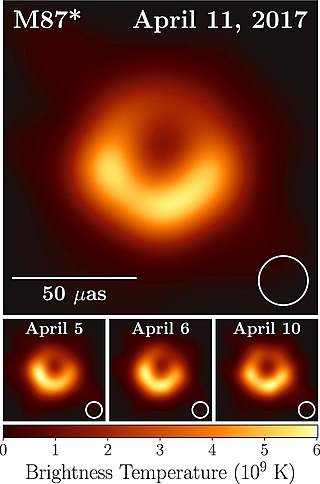
Feryal Özel is a Turkish-American astrophysicist born in Istanbul, Turkey, specializing in the physics of compact objects and high energy astrophysical phenomena. As of 2022, Özel is the Department Chair and a professor at the Georgia Institute of Technology School of Physics in Atlanta. She was previously a professor at the University of Arizona in Tucson, in the Astronomy Department and Steward Observatory.
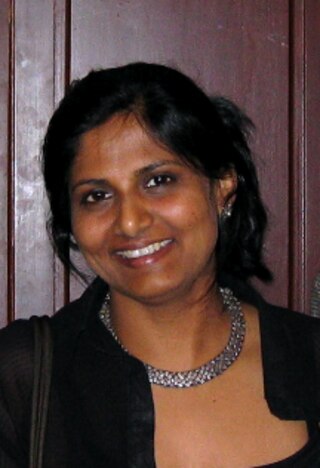
Priyamvada (Priya) Natarajan is a theoretical astrophysicist and professor in the departments of astronomy and physics at Yale University. She is noted for her work in mapping dark matter and dark energy, particularly in gravitational lensing and in models describing the assembly and accretion histories of supermassive black holes. She authored the book Mapping the Heavens: The Radical Scientific Ideas That Reveal the Cosmos.
Rachel S. Somerville is an American astrophysicist and astronomer and holds the George A. and Margaret M. Downsbrough Chair in Astrophysics at Rutgers University. She is known for theoretical research into galaxy formation and evolution. She was awarded the 2013 Dannie Heineman Prize for Astrophysics “for providing fundamental insights into galaxy formation and evolution using semi-analytic modeling, simulations and observations.”
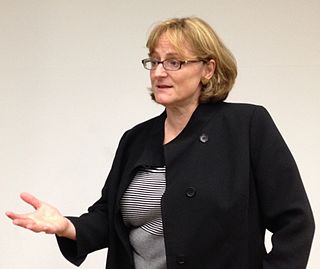
Claudia Megan Urry is an American astrophysicist, who has served as the President of the American Astronomical Society, as chair of the Department of Physics at Yale University, and as part of the Hubble Space Telescope faculty. She is currently the Israel Munson Professor of Physics and Astronomy at Yale University and Director of the Yale Center for Astronomy and Astrophysics. Urry is notable not only for her contributions to astronomy and astrophysics, including work on black holes and multiwavelength surveys, but also for her work addressing sexism and sex equality in astronomy, science, and academia more generally.

Neta Bahcall is an Israeli astrophysicist and cosmologist specializing in dark matter, the structure of the universe, quasars, and the formation of galaxies.
Emily Levesque is an American astronomer, author, and associate professor in the Department of Astronomy at the University of Washington. She is renowned for her work on massive stars and using these stars to investigate galaxy formation. She is also the author of three books, including the 2020 popular science book The Last Stargazers: The Enduring Story of Astronomy's Vanishing Explorers.
Emily Rice is an astronomy professor at the Macaulay Honors College at the City University of New York. In addition to her scientific contributions to the study of the atmospheric properties of low mass astronomical bodies, she has become well known for her astronomy-related public outreach projects. She is the co-founder of the astro-centric fashion shop STARtorialist, a co-founder for the public outreach series Astronomy on Tap, a parody video creator, and a current research associate for the American Museum of Natural History in New York City. She has appeared as a guest on the popular podcast StarTalk (podcast), and was a host for their spinoff show, StarTalk All-Stars. Rice also served as a public presenter at the Hayden Planetarium in New York.

Burçin Mutlu-Pakdil is a Turkish-American astrophysicist, and Assistant Professor at Dartmouth College. She formerly served as a National Science Foundation (NSF) and Kavli Institute for Cosmological Physics (KICP) Postdoctoral Fellow at the University of Chicago. Her research led to a discovery of an extremely rare galaxy with a unique double-ringed elliptical structure, which is now commonly referred to as Burcin's Galaxy. She was also a 2018 TED Fellow, and a 2020 TED Senior Fellow.
David Gerdes (born 1964) is an American astrophysicist, professor, and administrator at the University of Michigan. He is known for his research on trans-Neptunian objects, particularly for his discovery of the dwarf planet, 2014 UZ224.
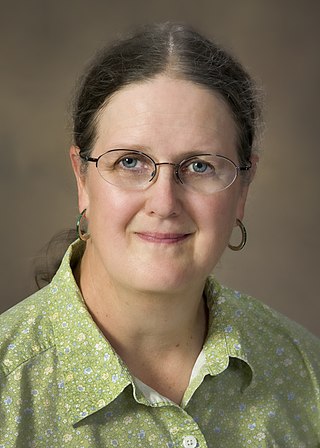
Marcia Jean Rieke is an American astronomer. She is a Regents' Professor of Astronomy and associate department head at the University of Arizona. Rieke is the Principal Investigator on the near-infrared camera (NIRCam) for the James Webb Space Telescope (JWST). She has also served as the deputy-Principal Investigator on the Near Infrared Camera and Multi-Object Spectrometer (NICMOS) for the Hubble Space Telescope (HST), and as the co-investigator for the multiband imaging photometer on the Spitzer Space Telescope, where she also acted as an outreach coordinator and a member of the Science Working Group. Rieke was also involved with several infrared ground-based observatories, including the MMT Observatory in Arizona. She was vice chair for Program Prioritization of the Astro2010 Decadal Survey Committee, "New Worlds, New Horizons". Marcia Rieke is considered by many to be one of the "founding mothers" of infrared astronomy, along with Judith Pipher.
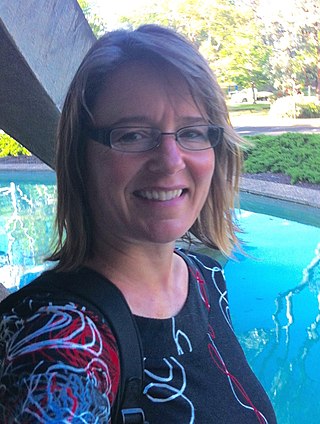
Kim A. Venn is a professor of physics and astronomy at the University of Victoria, Canada, and director of the university's Astronomy Research Centre. She researches the chemo-dynamical analysis of stars in the galaxy and its nearby dwarf satellites.
Lucy Frear Fortson is an American astronomer known for her work on gamma-ray astronomy and Galaxy morphological classification and for her leadership of citizen science projects including the Galaxy Zoo and Zooniverse. She is a professor in the School of Physics and Astronomy at the University of Minnesota.
Ann I. Zabludoff is an American astronomer and astrophysicist whose research has included galaxy clusters and the effects of galactic environments on star formation, and the use of gravitational lenses to study the formation and interaction of the earliest galaxies, including observations with the Magellan Telescopes and Hubble Space Telescope. She is a professor of astronomy, astrophysics, and cosmology at the University of Arizona.
Alyson Brooks is an American theoretical astrophysicist and professor at Rutgers University. She uses large-scale simulations to determine how galaxies form.

Jennifer Mae Lotz is an American astronomer who studies the shape and evolution of galaxies, including galaxy mergers. She works at the NOIRLab, a project of the National Science Foundation, as director of the Gemini Observatory.
Caitlin M Casey is an observational astronomer and associate professor at the University of Texas at Austin. She is known for her work in extragalactic astrophysics; she works on the formation and evolution of massive galaxies in the early Universe.

Ata Sarajedini is an astrophysicist, professional astronomer, academic, author, and podcaster. He is the Bjorn Lamborn Endowed Chair and Professor in Astrophysics at Florida Atlantic University.
Yanqin Wu is a theoretical astrophysicist whose research concerns planet formation, protoplanetary disks, the effects on planets of photoevaporation, orbital resonance, and planetary migration, and the classification and distribution of exoplanets. She has theorized that planetary collisions have culled initially-crowded systems until what remains is often on the edge of chaos, and used oscillations in the rings of Saturn to study the past history of the Solar System. Educated in China and the US, she has worked in England and Canada, where she is a professor in the Department of Astronomy & Astrophysics of the University of Toronto.
Snežana Stanimirović ia a Serbian-American radio astronomer whose research focuses on the interstellar medium and intergalactic medium, including neutral hydrogen clouds and the production of cosmic dust by supernovae. She is a professor of astronomy at the University of Wisconsin–Madison.
References
- ↑ "Ten Young Geniuses Shaking Up Science Today", Popular Science, 20 October 2009, retrieved 2024-04-23
- 1 2 3 de los Reyes, Mia (6 June 2021), "Meet the AAS Keynote Speakers: Dr. Marla Geha", Astrobites, retrieved 2024-04-23
- ↑ "Marla Geha", Physics people, Yale University, retrieved 2024-04-23
- 1 2 3 4 5 Curriculum vitae, Yale University Astronomy, retrieved 2024-04-23
- ↑ Morris, Nate (6 February 2023), Rubicon's Nate Morris Interviews Yale Astrophysicist Professor Marla Geha, Rubicon, retrieved 2024-04-23
- ↑ "Marla C Geha", AstroGen, American Astronomical Society, retrieved 2024-04-23
- ↑ 'Million-Dollar Professor' to build community of warrior-scholar scientists, Yale University Astronomy, 13 December 2017, retrieved 2024-04-23
- ↑ "Rocket Science for Everyone | Yale Online". online.yale.edu. Retrieved 2024-07-27.
- ↑ "Marla Geha", Fellows, John Simon Guggenheim Memorial Foundation, retrieved 2024-04-23
- ↑ "Marla Geha, PhD | HHMI Professor Profile | 2018-Present". www.hhmi.org. Retrieved 2024-07-27.
- ↑ "Marla Geha, awarded the Dylan Hixon '88 Prize for teaching excellence in the natural sciences | Department of Astronomy". astronomy.yale.edu. Retrieved 2024-07-27.
- ↑ Gonzalez, Susan (5 May 2022). "Six faculty members honored for 'transformational' classroom instruction". YaleNews. Retrieved 2024-07-27.